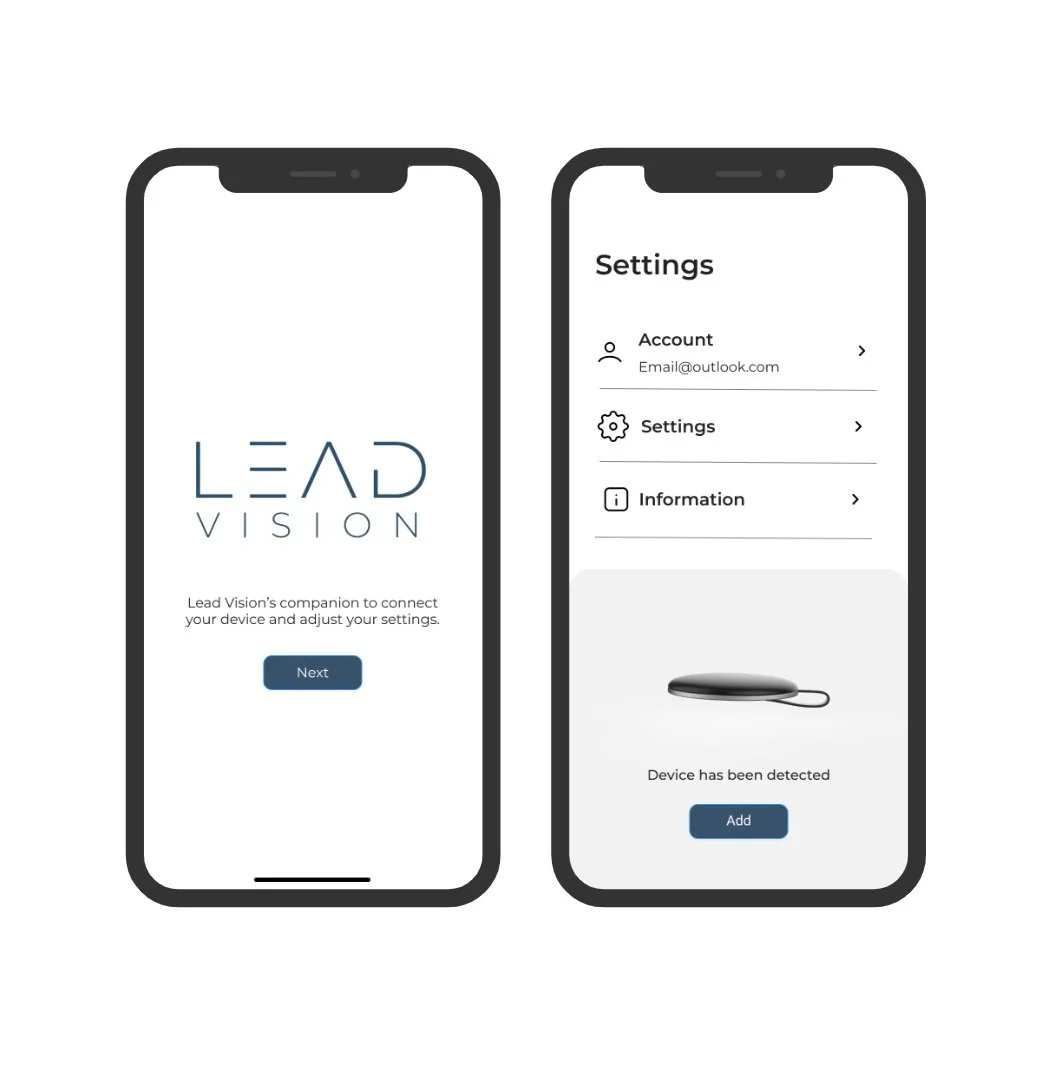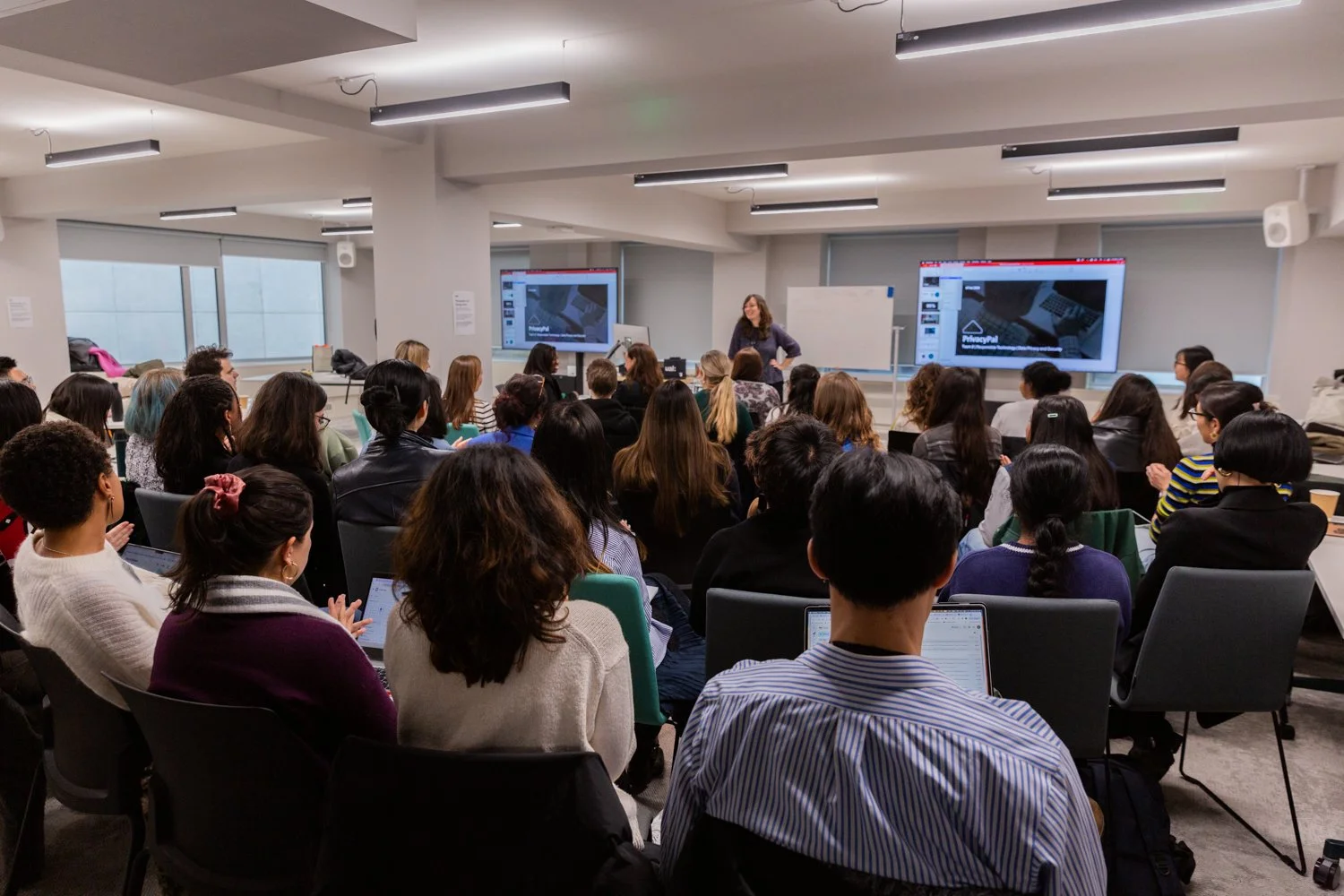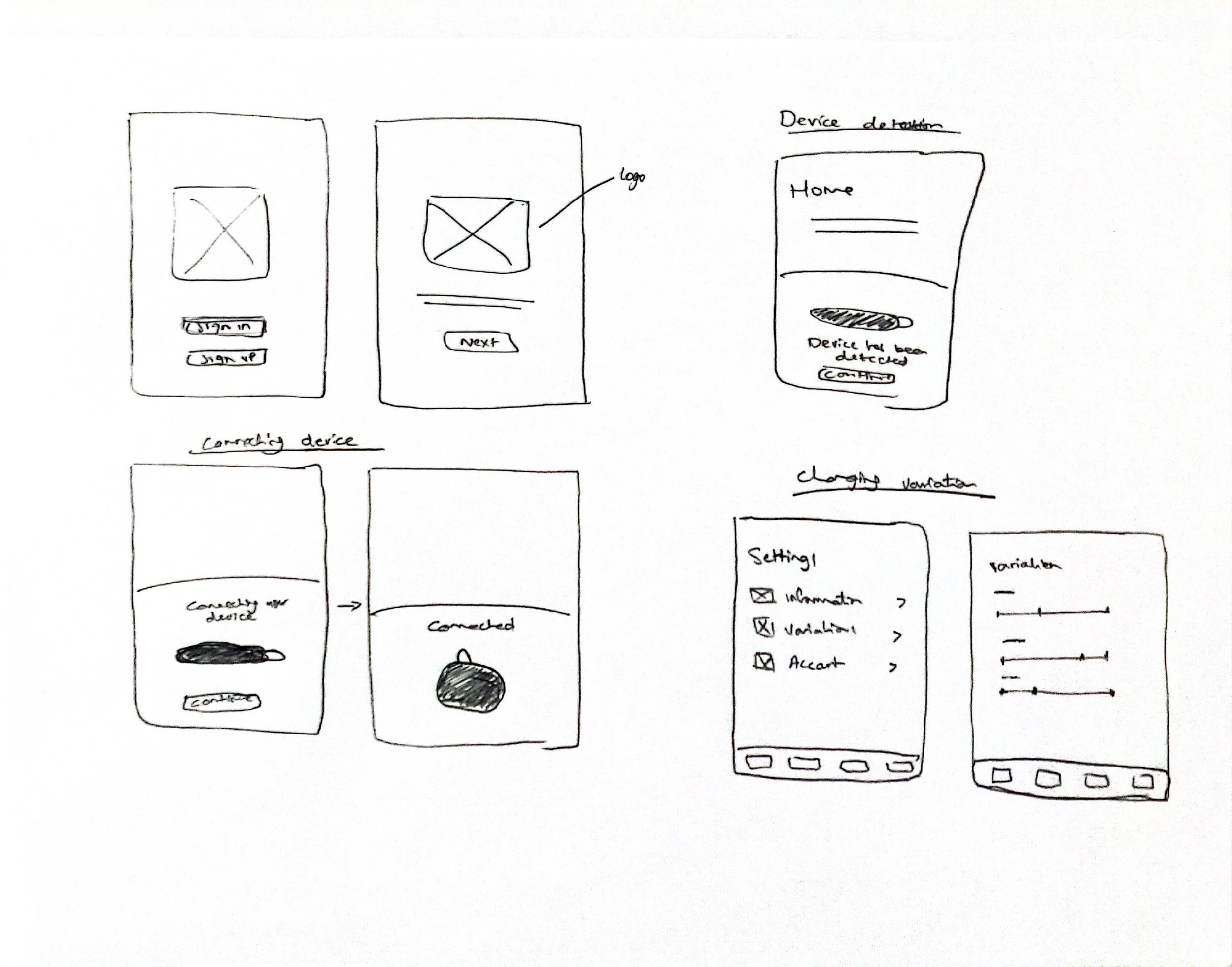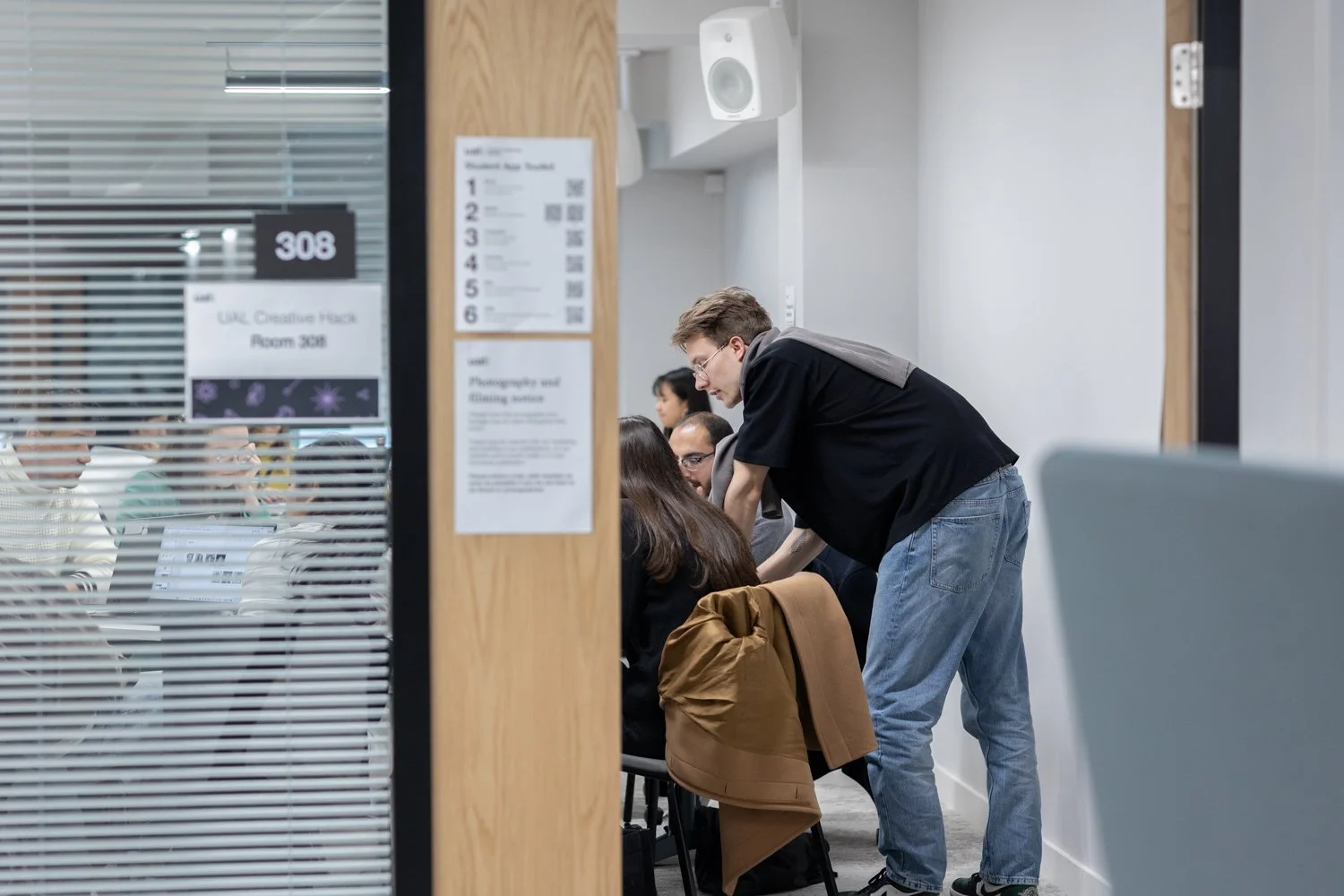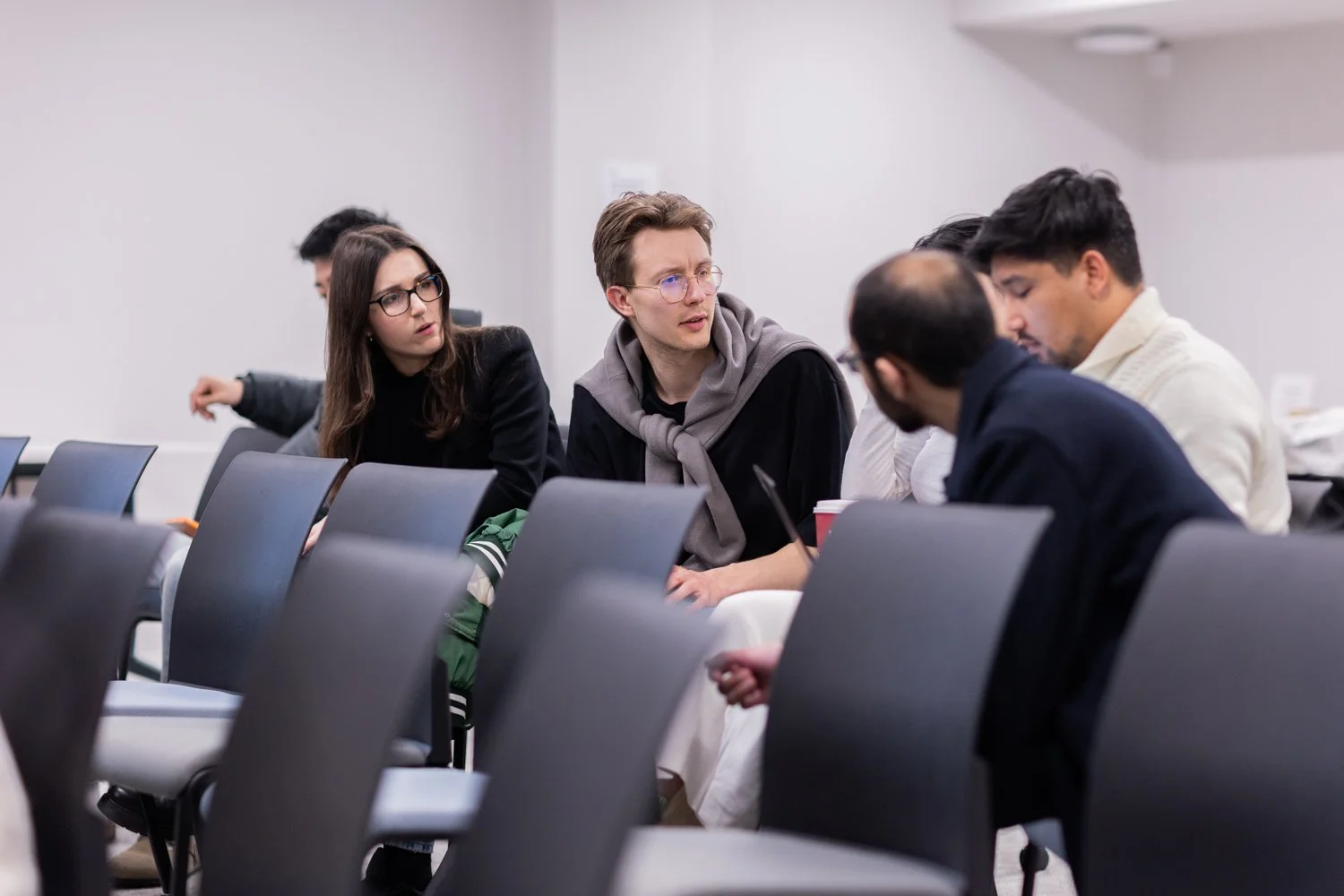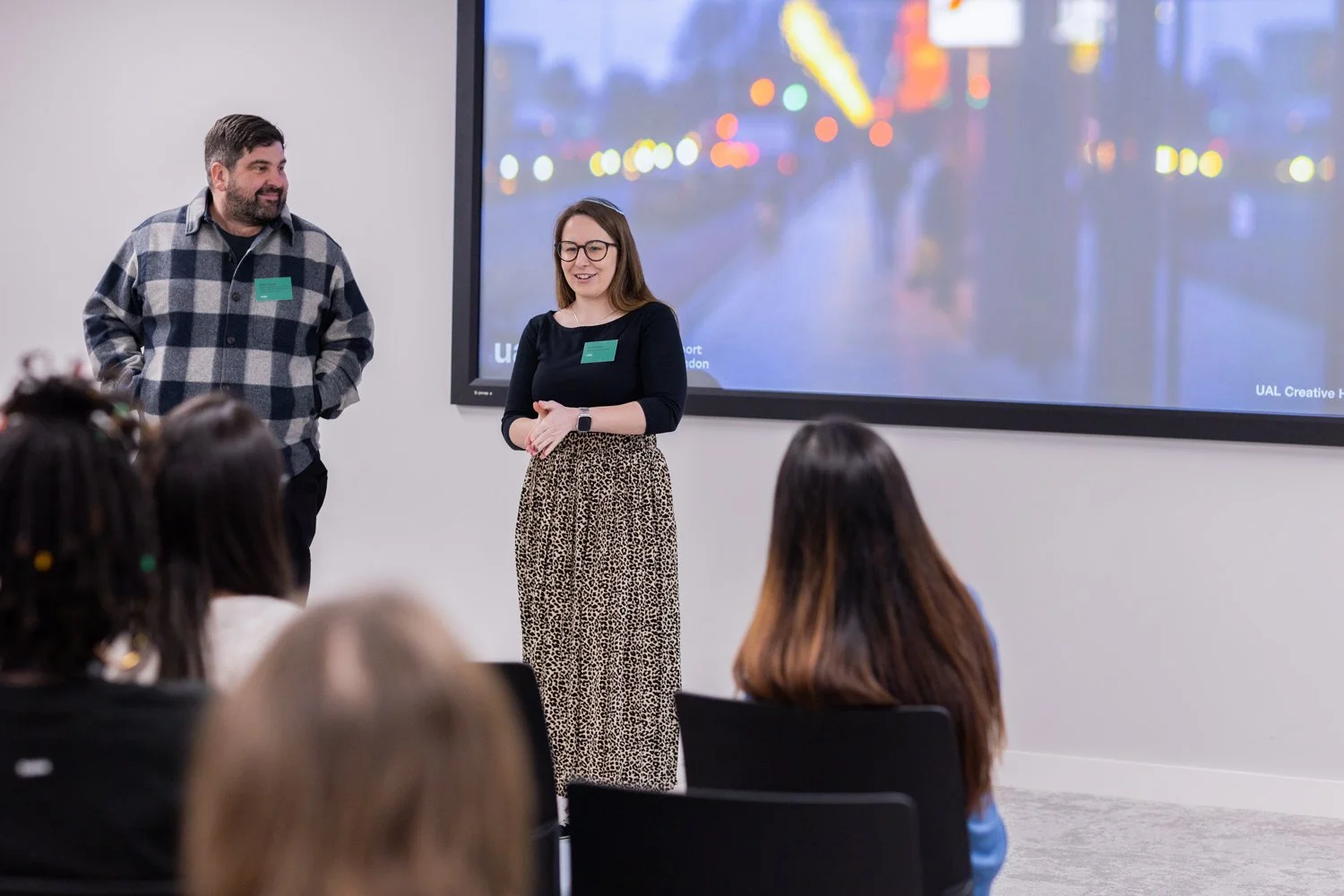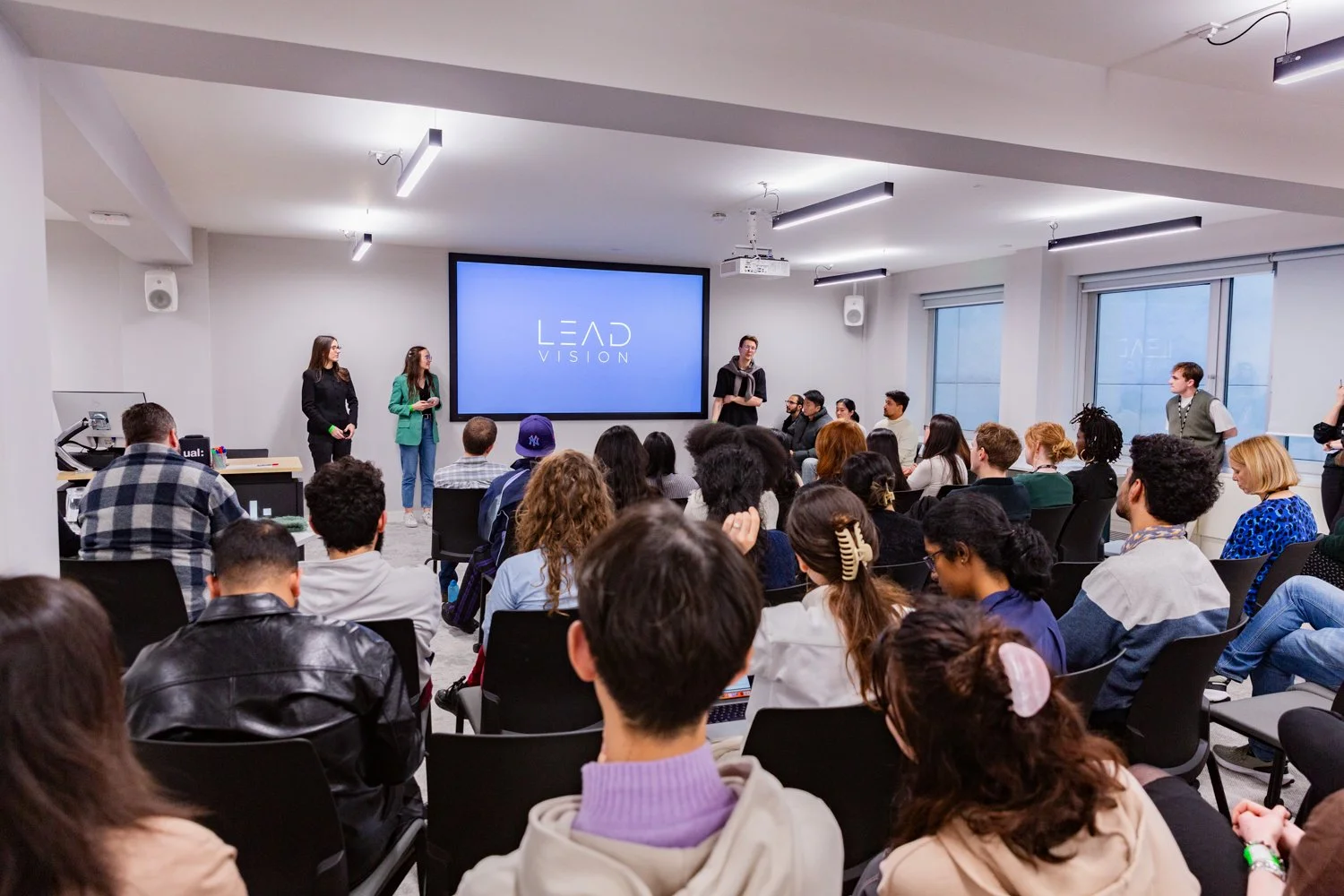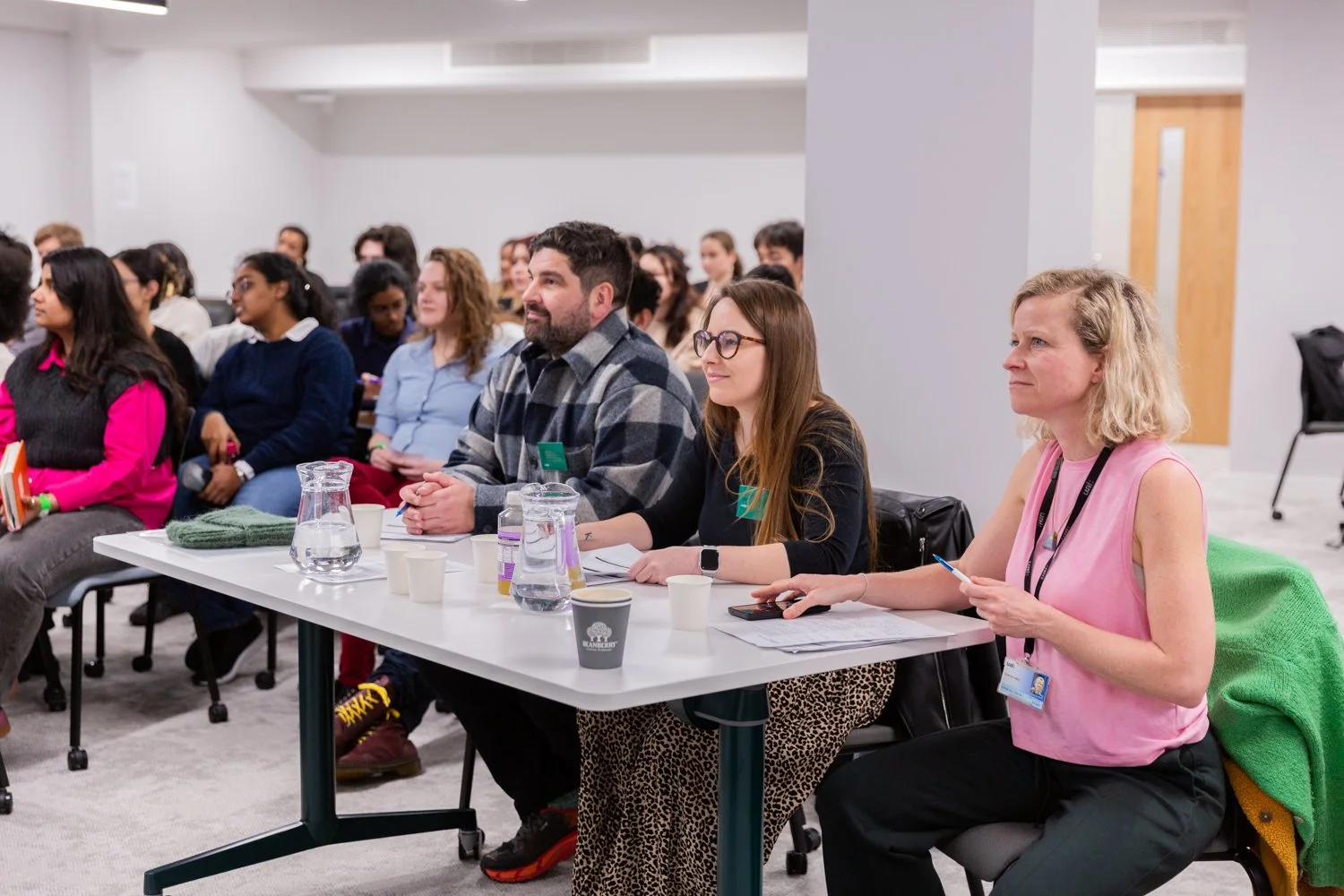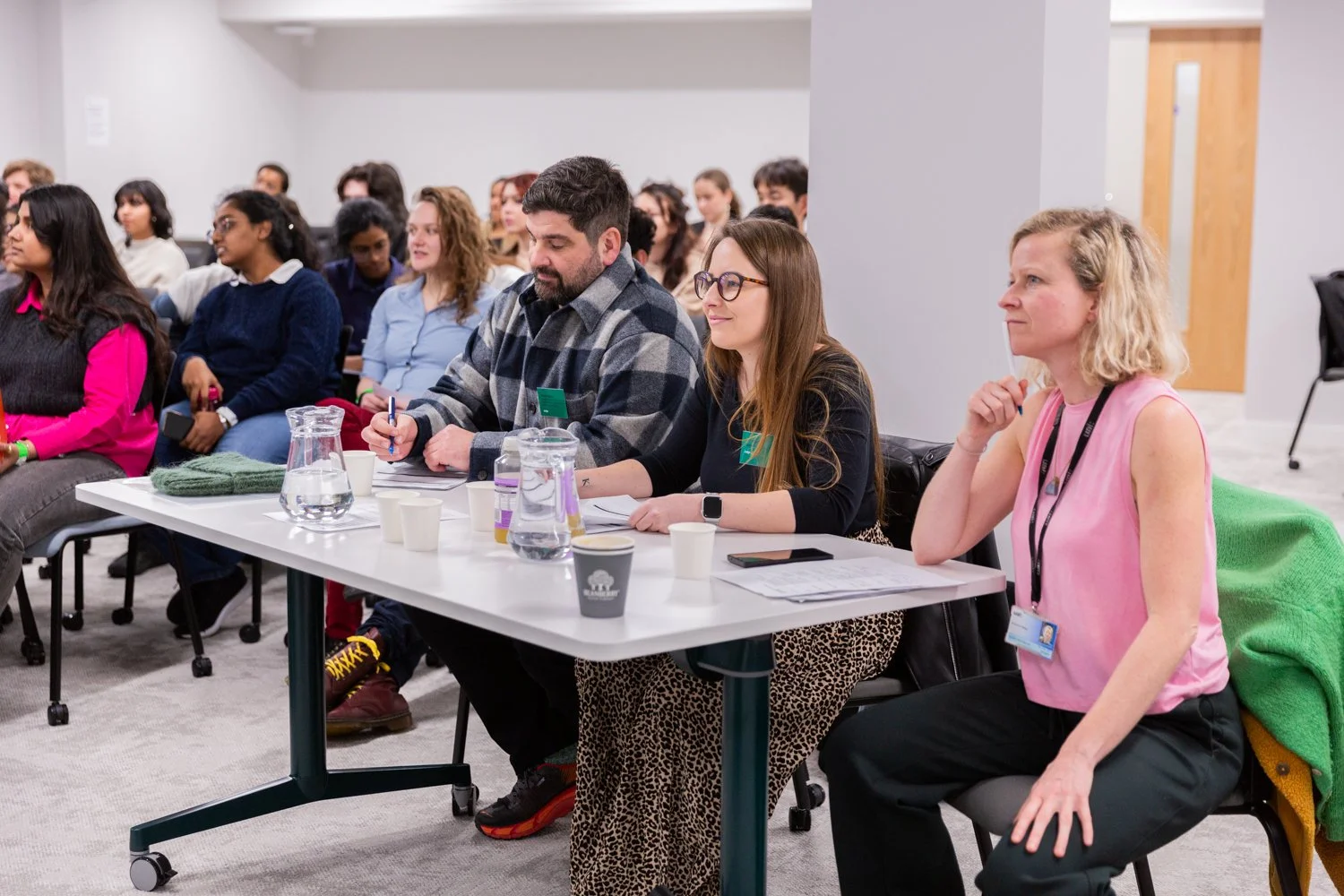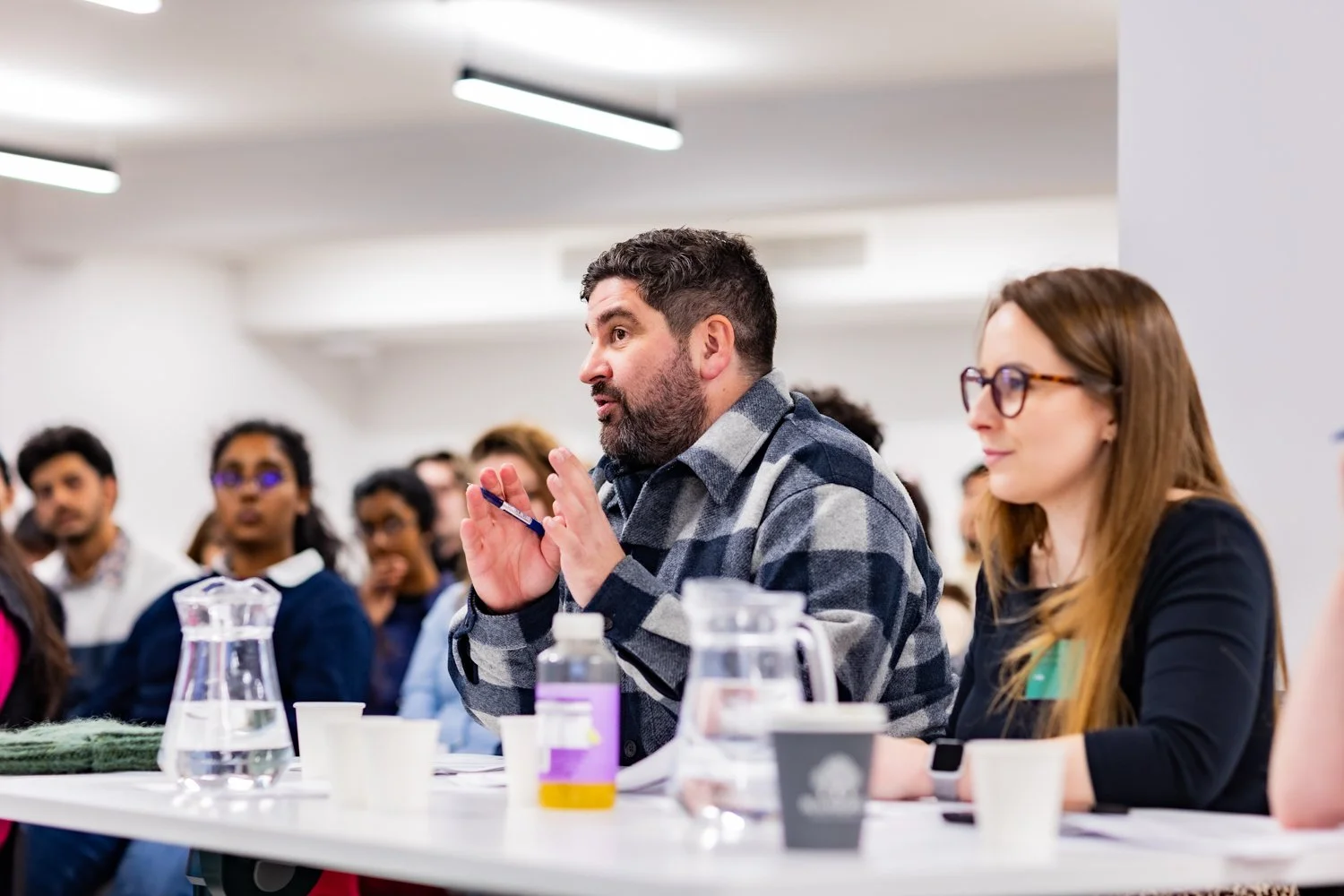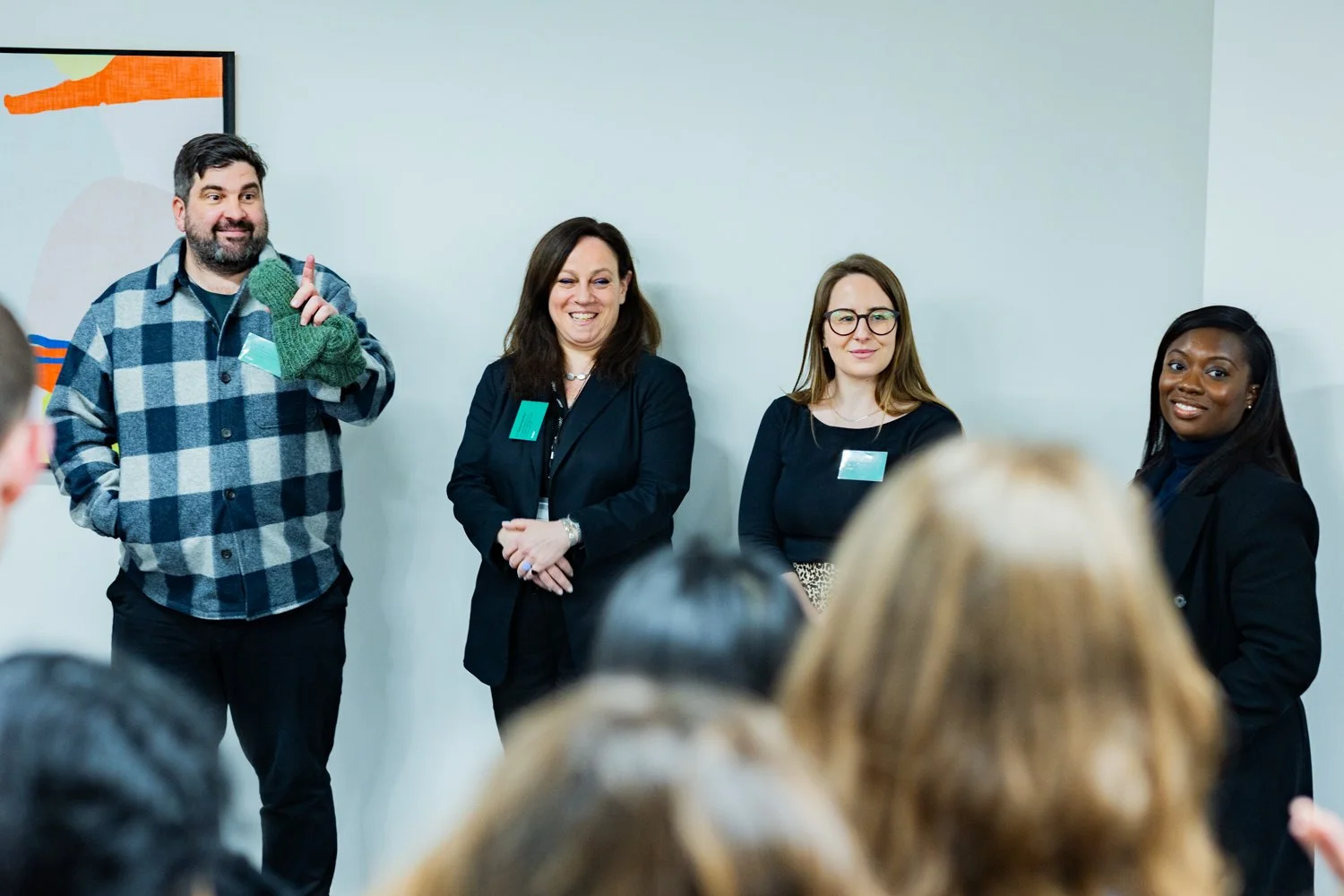Lead Vision
Overview: In my participation in UAL's Creative Hackathon, designed for students and recent graduates, the challenge was centred around how emerging technologies can be used to instigate positive behavioural changes in users while mitigating negative impacts.
Timeline: Feb 7th - Feb 9th 2024
My Role: Research, Wireframing, UI Design & Pitching
Team: 8 Members
The Brief
Smart cities use Internet of Things (IoT) devices such as connected sensors, lights, and meters to collect and analyse data and then use this data to improve infrastructure, public utilities and services. What other innovations could be developed in this space to improve life for London residents and workers?
The Problem
Navigating London’s public transportation system presents daily challenges, where passengers often encounter difficulties navigating, accessing information, and locating the correct platforms. For visually impaired users, navigating this complex system becomes significantly more daunting. Relying on someone else for commute support can also impose a burden on visually impaired users, especially when that assistance may not always be readily available.
The Solution
We developed a concept called Lead Vision which enables visually impaired users to navigate London’s public transport system more conveniently by providing safer routes to their journey through a voice assistant similar to a talking walking stick. This concept aims to foster independence and confidence among visually impaired users. Leveraging emerging technologies such as AI to give personalised route recomendations, the goal is to provide reliable assistance for their daily commutes across London.
After activating the Lead Vision device, the app will detect it, allowing users to connect the app to the device. Users can also personalise device settings like sound frequency through the app.
Discovering Device and Changing Settings
Providing Safer Routes
The app enables users to access safer route options through AI, enhancing the convenience of their commute.
Process
Attending Morning Keynotes
Throughout the three-day hackathon, we received morning keynote presentations on the final two days, delivered by speakers from diverse industries. These keynotes offered me and my group valuable guidance on effectively pitching our concept to panellists and understanding the importance of the value proposition within the context of the Business Model Canvas.
Desk Research
As a team, after pinpointing the problem space, we opted to conduct desk research to delve deeper into the challenges visually impaired users encounter while navigating London’s public transport system. Our aim in conducting this research was not only to gain a clearer understanding of these challenges but also to gather current market insights and pinpoint any existing gaps that could inform our concept proposal.
Key Insights From Research
Lack of Confidence in Commuting
Users want to leave the house more often and feel confident when commuting around London.
Lack of Safety
When travelling solo on London's tube, users often feel they lack a sense of safety.
Journey Limitations
Four out of every ten blind and partially sighted users find themselves unable to complete all the journeys they desire or require independently.
How Might We
We integrate emerging technologies like AI and foster collaboration among stakeholders to enhance further accessibility and inclusivity of London's public transport system for visually impaired users.
Product Vision + Redirections
During this phase, we focused on defining key goals for our concept idea, drawing insights from our research findings. We also conducted market research on competitors to explore existing offerings and draw inspiration from specific features we admired in various apps.
After receiving feedback from mentors, we made the decision make changes to our initial concept. It became apparent that our original idea of using AI aided smart lenses lacked tangibility, particularly concerning costs and user convenience.
Concept Ideation + Defining the MVP
As the pitch proposal deadline loomed with less than 6 hours remaining, we did an 8-minute sketching session to allow everyone to visualise their vision for the solution. Afterwards, I translated the sketches created by the team into mockups of the main screens for the MVP using Figma.
Final Concept Screens
Final Pitch Presentation
Once the final MVP screens were created, we transitioned to creating the presentation slides for the pitch using Google Slides. Given the time constraint of the judges spending only 5 minutes with each presentation, our focus was on presenting our process and solutions concisely. We emphasised defining our target audience, identifying their pain points, and proposing our solutions as the core elements of our presentation.
Results + Key Takeaways
To summarise, our team effectively created and submitted the final presentation within the allotted time frame for the panel of judges. Although we did not win the prize, our concept received commendation from both the panelists and other participants of the hackathon. The overall experience was enriching for me, particularly the chance to collaborate with seven other talented creatives from diverse backgrounds, which I thoroughly enjoyed.
Some key takeaways for me:
Importance of collaboration: Through teamwork, I learned the importance of active listening and open communication, which are essential for successful collaboration. Working with seven other creatives from diverse backgrounds also showed me what collaboration can bring, especially with the interesting perspectives that emerged during the ideation stage.
The process is not always linear: Participating in this hackathon reinforced to me the importance of adaptability and the understanding that the design process is not always linear. Particularly, adapting and pivoting from our original concept in response to mentor feedback highlighted how embracing change can lead to a stronger solution.

